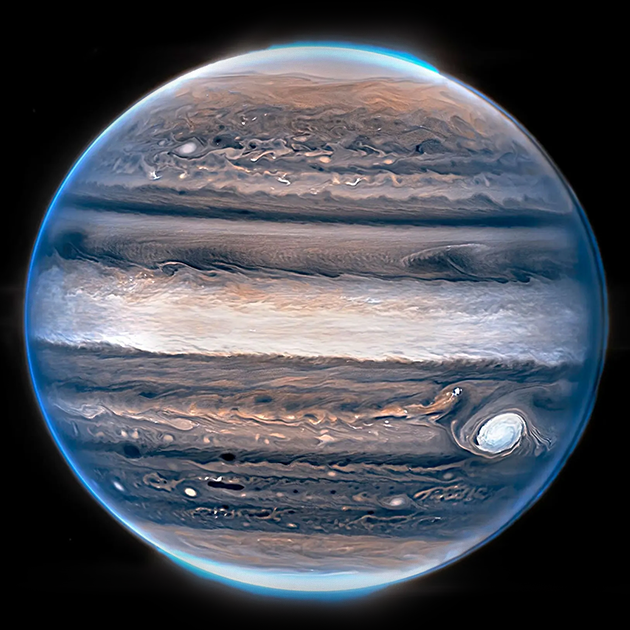Jupiter is the fifth planet of our solar system. It also is the biggest planet in the solar system.

Table of Contents
Remarkable data about Jupiter:
| Radius | 69,911 km |
| Mass | 1.898 × 10^27 kg |
| Gravity | 24.79 m/s² |
| Distance from Sun | 778.5 million km |
| Age | 4.503 billion years |
| Orbital period | 11.86 years |
| Natural satellites | 95 Io, Europa, Ganymede, Callisto, Amalthea, Himalia, Elara, Pasiphae, Sinope, Lysithea, Carme, Ananke, Leda, Metis, Adrastea, Thebe, and more |
Key Features of Jupiter:
- Gas Giant: Jupiter is primarily composed of hydrogen (about 90%) and helium (about 10%), with traces of methane, water vapor, ammonia, and other compounds. Unlike terrestrial planets, it does not have a solid surface.
- Size and Mass: Jupiter is the largest planet in the Solar System, with a diameter of about 142,984 km, which is about 11 times the diameter of Earth. It has a mass that is 318 times that of Earth and more than twice the mass of all the other planets combined.
- Bands and Zones: The planet’s appearance is characterized by alternating light-colored zones and dark-colored belts that run parallel to its equator. These bands are the result of powerful winds in Jupiter’s upper atmosphere that can reach speeds of up to 620 km/h (385 mph).
- Great Red Spot: Jupiter is famous for the Great Red Spot, a massive storm that is at least 400 years old. It is an anticyclonic storm, about 1.3 times the diameter of Earth, and has wind speeds of up to 432 km/h (268 mph).
- Magnetosphere Size: Jupiter’s magnetosphere is enormous, extending up to 7 million kilometers (4.3 million miles) toward the Sun and nearly reaching Saturn’s orbit on the side facing away from the Sun. It captures and accelerates charged particles, creating intense radiation belts around the planet.
- Faint Ring System: Unlike Saturn’s prominent rings, Jupiter has a thin and faint ring system composed mainly of dust particles ejected from its moons due to micrometeorite impacts. The rings are divided into three main components: the Halo Ring, Main Ring, and Gossamer Rings.
Jupiter Position in the Solar System:
- Orbit: it orbits the Sun at an average distance of about 484 million miles (778 million km).
- Rotation and Tilt: it rotates on its axis once every 9 hours and 55 minutes, making it the fastest-rotating planet in the Solar System. The planet has a small axial tilt of 3.13 degrees, which means it does not experience significant seasonal changes like Earth does.
